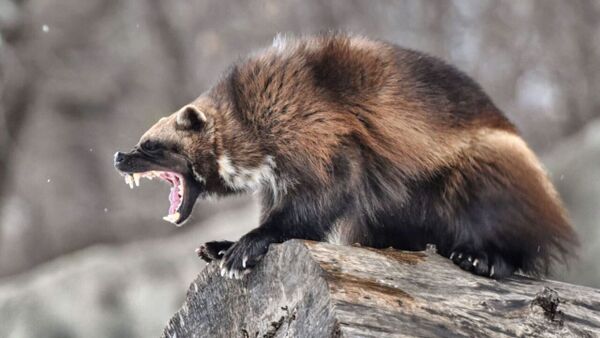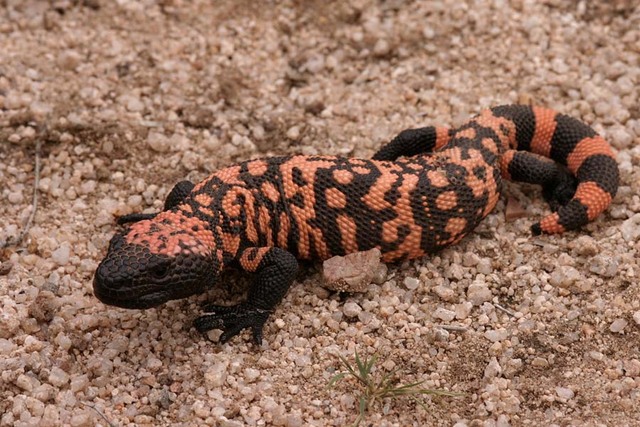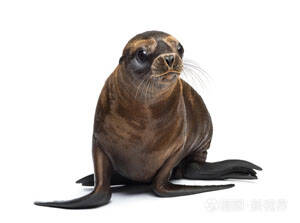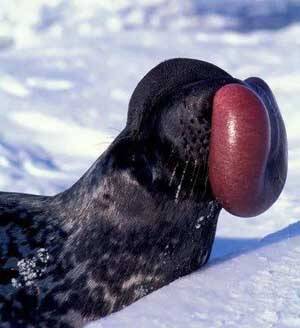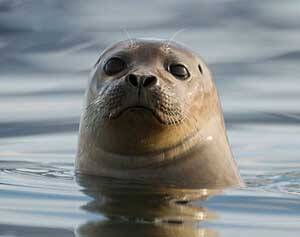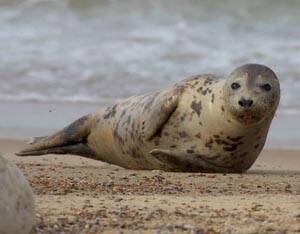Red Kangaroos
IUCN
LCBasic Information
Scientific classification
- name:Red Kangaroos
- Scientific Name:
- Outline:Europe
- Family:Red-kangaroos
Vital signs
- length:2.4m
- Weight:120 to 200 pounds
- lifetime:6-8
Feature
Red kangaroos are known for their strong hind legs, which they use for mobility and defense.
Distribution and Habitat
Red kangaroos are found across much of Australia, but their main habitat includes arid and semi-arid areas inland, such as the Outback.
Appearance
Strong hind legs, long and powerful tail, large ears, keen hearing,
Details
Table of Contents
Introduction: What are Red Kangaroos?
Physical Characteristics of Red Kangaroos
Size and Weight
Unique Features
Habitat and Distribution
Where Red Kangaroos Live
Adaptations to Harsh Environments
Diet and Feeding Habits
What Do Red Kangaroos Eat?
Foraging Behavior
Life Cycle and Reproduction
Mating and Breeding Seasons
Development of Joeys
Behavior and Social Structure
Social Groups
Dominance and Mating Behavior
Predators of Red Kangaroos
Natural Predators
Human Impact
Conservation Status
Population Trends
Conservation Efforts
Fun Facts About Red Kangaroos
Conclusion: The Importance of Red Kangaroos in Australia’s Ecosystem
1. Introduction: What are Red Kangaroos?
Red kangaroos (Macropus rufus) are the largest of all kangaroo species and are considered one of Australia's most iconic animals. These marsupials are best known for their distinctive red-brown fur, muscular bodies, and strong hind legs. Native to Australia, they are commonly found in the country's vast, arid interior and are adapted to survive in some of the harshest environments on Earth. Despite their tough exterior, red kangaroos play a crucial role in maintaining the ecological balance of their habitats.
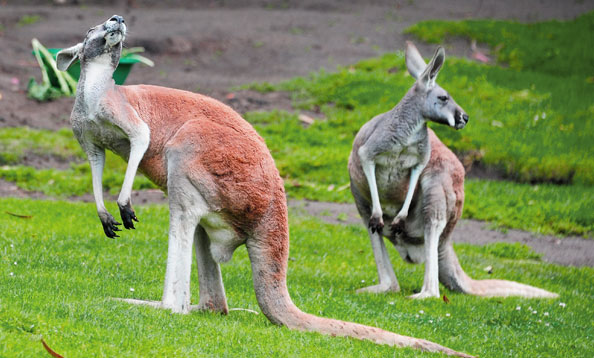
2. Physical Characteristics of Red Kangaroos
Size and Weight
Red kangaroos are the largest species of kangaroo. Adult males, known as "boomers," can grow up to 8 feet (2.4 meters) in length, including their tail. They can weigh between 120 to 200 pounds (54 to 90 kg), with some exceptionally large males reaching even greater weights. Female kangaroos are smaller, usually weighing between 40 to 70 pounds (18 to 32 kg).
Unique Features
Red kangaroos are known for their powerful hind legs, which they use for both locomotion and defense. Their long, muscular tail is essential for maintaining balance while hopping and also helps them steer when moving at high speeds. Their large ears help them detect sounds over long distances, and their keen sense of hearing is crucial for detecting predators.
3. Habitat and Distribution
Where Red Kangaroos Live
Red kangaroos are found across most of Australia, but their primary habitat includes the arid and semi-arid regions of the interior, such as the Outback. These areas are characterized by sparse vegetation, low rainfall, and extreme temperatures. Red kangaroos are well-suited to these environments, with their ability to travel long distances in search of food and water.
Adaptations to Harsh Environments
Red kangaroos are highly adapted to survive in Australia's extreme conditions. They can withstand long periods of drought by conserving water in their bodies. They are also capable of cooling their bodies by licking their forearms, where the blood vessels are close to the skin's surface. This behavior helps regulate their body temperature in hot conditions.
4. Diet and Feeding Habits
What Do Red Kangaroos Eat?
Red kangaroos are herbivores and primarily feed on grasses and other vegetation. Their diet consists mainly of grasses, but they also eat leaves, shoots, and shrubs when grasses are scarce. They are selective feeders, often preferring younger, more tender plants. In times of drought, they are able to survive on tough, dry grasses by using their powerful jaws and grinding teeth to break them down.
Foraging Behavior
Red kangaroos are nocturnal or crepuscular feeders, meaning they are most active during the cooler hours of dawn and dusk. They typically graze in open areas where they can spot potential predators. In groups, kangaroos may share food sources, but they are generally solitary feeders and prefer to forage alone if possible.
5. Life Cycle and Reproduction
Mating and Breeding Seasons
Red kangaroos mate during the warmer months, typically from October to March, with the peak of mating activity occurring in the summer. Mating occurs when males compete for access to females, often through displays of strength and dominance. Dominant males will mate with multiple females, while smaller males may resort to less direct methods, such as sneaking in to mate.
Development of Joeys
Female red kangaroos have a unique reproductive cycle. After mating, the fertilized egg remains in a state of dormancy in the mother's womb for several weeks until environmental conditions are favorable. When the joey is born, it is underdeveloped and about the size of a peanut. It then crawls into the mother's pouch, where it continues to grow for several months. The joey stays in the pouch for up to 8 months, after which it begins to emerge and gradually becomes more independent.
6. Behavior and Social Structure
Social Groups
Red kangaroos are social animals, but they tend to form loose groups called "mobs." These mobs are usually made up of females and their offspring, while adult males are more solitary, coming together with females only during mating seasons. The size of a mob can vary, with some containing only a few individuals and others numbering in the hundreds, particularly when food and water are abundant.
Dominance and Mating Behavior
Male red kangaroos engage in physical contests to establish dominance. These "boxing matches" involve two males standing on their hind legs and using their powerful front limbs to strike each other. The winner gains access to mates and establishes its dominance in the group.
7. Predators of Red Kangaroos
Despite their size and strength, red kangaroos have several natural predators, especially when they are young or injured. These include:
Dingoes (wild dogs): Dingoes are the primary natural predators of red kangaroos. They often hunt in packs and target weak, young, or sick kangaroos.
Humans: Humans hunt red kangaroos for their meat and hides, which is a common practice in some areas of Australia.
Eagles and Hawks: Large raptors, such as wedge-tailed eagles, prey on young kangaroos or those that are weak or sick.
Snakes: Certain species of large snakes, like pythons, may target joeys or small kangaroos.
8. Conservation Status
Red kangaroos are not considered endangered, and their population is currently stable, with an estimated 50 million kangaroos in Australia. However, their numbers can fluctuate based on environmental conditions, such as droughts or changes in habitat. In some regions, commercial hunting of kangaroos is regulated to ensure sustainable population levels.
Although red kangaroos are not at immediate risk, their conservation status is closely linked to environmental factors and human activities. Conservation efforts focus on maintaining habitat quality, regulating hunting practices, and protecting kangaroo populations from over-exploitation.
9. Fun Facts About Red Kangaroos
Strong Hopping Power: Red kangaroos are known for their ability to leap great distances. They can travel up to 25 feet (7.6 meters) in a single jump and can reach speeds of up to 35 miles per hour (56 km/h) in short bursts.
Communicating with Tails: Kangaroos use their tails for communication, especially in social situations. A wagging tail or a thump can signal excitement or distress.
Longevity: Red kangaroos can live up to 6 to 8 years in the wild, though many die from predation or accidents before reaching full maturity.
10. Conclusion: The Importance of Red Kangaroos in Australia’s Ecosystem
Red kangaroos play a vital role in Australia’s ecosystem. As herbivores, they help control the growth of grasses and shrubs, preventing overgrowth and maintaining a balanced landscape. They are also an essential part of the food web, serving as prey for various predators, including dingoes, eagles, and humans.
Their ability to adapt to Australia's harsh, arid conditions demonstrates the resilience of this iconic species. While they are not currently at risk of extinction, red kangaroos face ongoing challenges from environmental changes, human activity, and predation.
Through conservation efforts and responsible management practices, we can ensure that red kangaroos continue to thrive, helping preserve the ecological balance of Australia for future generations.

